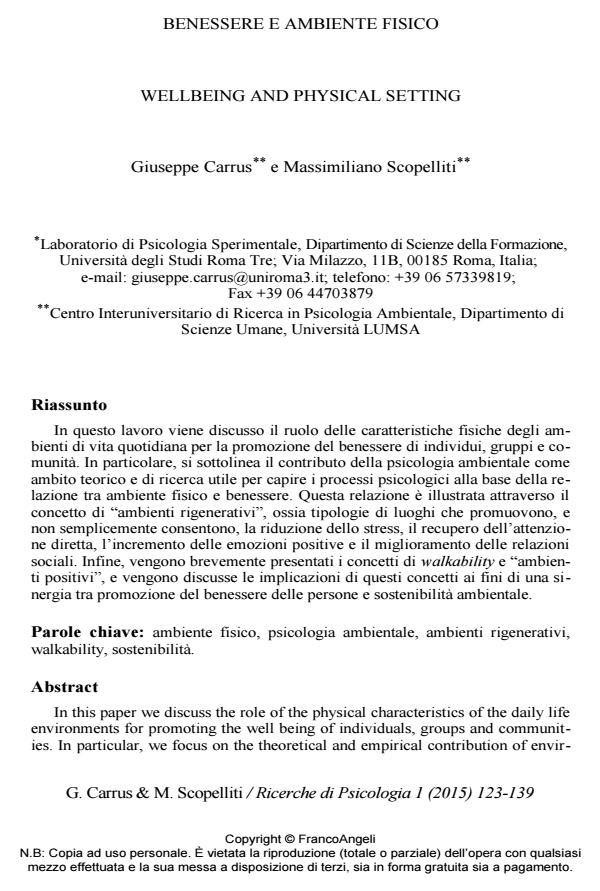Wellbeing and physical setting
Journal title RICERCHE DI PSICOLOGIA
Author/s Giuseppe Carrus, Massimiliano Scopelliti
Publishing Year 2015 Issue 2015/1
Language Italian Pages 17 P. 123-139 File size 228 KB
DOI 10.3280/RIP2015-001007
DOI is like a bar code for intellectual property: to have more infomation
click here
Below, you can see the article first page
If you want to buy this article in PDF format, you can do it, following the instructions to buy download credits

FrancoAngeli is member of Publishers International Linking Association, Inc (PILA), a not-for-profit association which run the CrossRef service enabling links to and from online scholarly content.
In this paper we discuss the role of the physical characteristics of the daily life environments for promoting the well being of individuals, groups and communities. In particular, we focus on the theoretical and empirical contribution of environmental psychology to understand the psychological processes involved in the relation between well being and physical settings. This relation is illustrated through the concept of restorative environments: places that promote, and not only permit, the recovery from stress, the restoration of directed attention, the increase of positive emotions, and the improvement of social relations. Finally, the concepts of walkability and positive environments are briefly illustrated, and their implications for the simultaneous promotion of human well being and environmental sustainability are discussed.
Keywords: Physical setting, environmental psychology, restorative environments, walkability, sustainability.
Giuseppe Carrus, Massimiliano Scopelliti, Benessere e ambiente fisico in "RICERCHE DI PSICOLOGIA " 1/2015, pp 123-139, DOI: 10.3280/RIP2015-001007